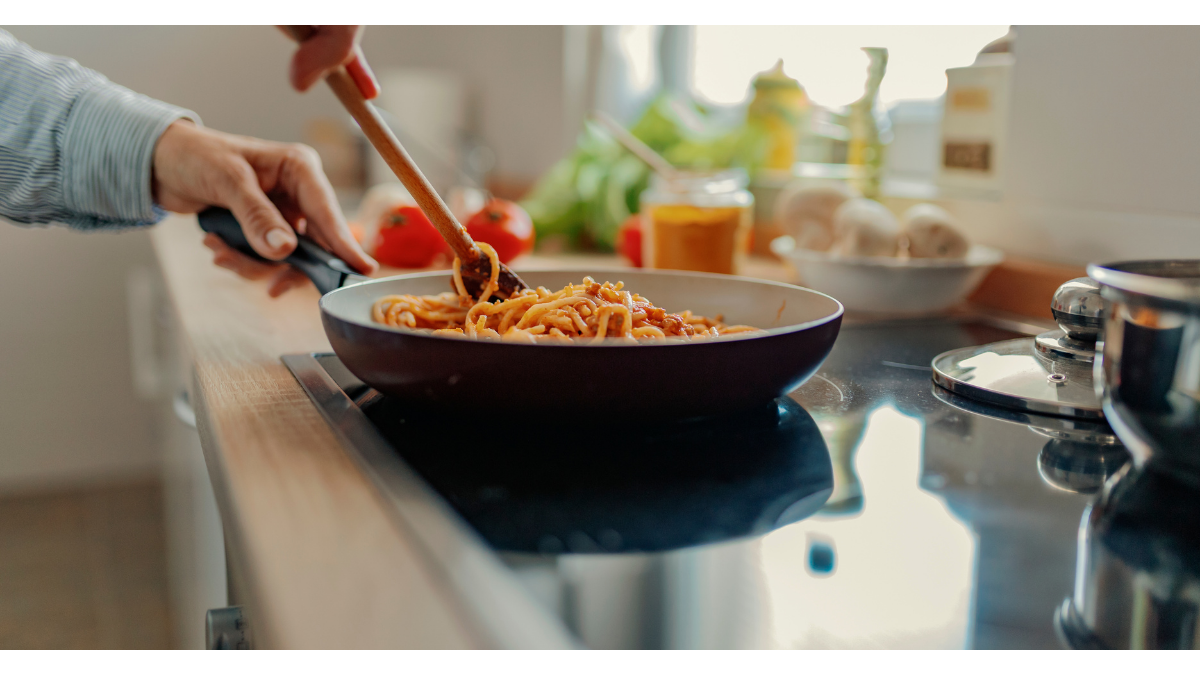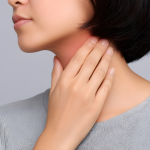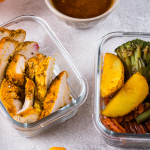Summary
Common cookware—such as scratched nonstick pans, plastic containers, and reactive aluminum—can expose you to harmful chemicals like PFAS and disrupt kidney, immune, and reproductive health. Healthier alternatives include stainless steel, cast iron, ceramic, and glass, which are non-toxic, durable, and safe at high heat. Switching to these materials transforms your kitchen into a truly health-conscious, chemical-free space.
When you buy through our links, we may earn a commission. Learn More.
You’ve swapped processed foods for whole ingredients, traded sugary drinks for herbal teas, and maybe even started growing your own herbs. But while you’re focused on what goes into your body, have you considered what you’re cooking with? The truth is, many common kitchen tools and cookware may be silently undermining your health efforts through hidden chemical exposures.
From scratched non-stick pans releasing potentially harmful compounds to plastic containers leaching hormone-disrupting chemicals into your food, our kitchens often harbour unexpected sources of toxins. The good news? With some knowledge and strategic swaps, you can create a truly health-supportive cooking environment that enhances rather than compromises your wellness goals.
Here’s what every health-conscious Canadian needs to know about the hidden hazards in their kitchen — and the safer alternatives that can transform your cooking space into a genuine sanctuary for health.
The Non-Stick Dilemma: When Convenience Comes at a Cost
We chose to start with non-stick cookware because it’s probably sitting in your kitchen right now, and the science around its safety concerns is both compelling and actionable. Traditional non-stick coatings, particularly those containing polytetrafluoroethylene (PTFE) — commonly known as Teflon — have raised significant health concerns among researchers and health experts.
When heated to high temperatures (above 260°C/500°F), PTFE coatings can release toxic fumes that cause flu-like symptoms in humans, a condition known as “Polymer fume fever” or informally called “Teflon flu.” More concerning are the per- and polyfluoroalkyl substances (PFAS) used in many non-stick coatings, which have been linked to various health issues including hormone disruption, immune system problems, and increased cancer risk.
The particular danger lies in how easily these coatings can be compromised. Even small scratches or chips can increase chemical leaching, and most of us have used metal utensils on non-stick surfaces at some point, unknowingly creating pathways for these compounds to enter our food.
Health Concerns of Toxic Cookware
Hormone disruption
PFAS compounds can interfere with thyroid and reproductive hormones.
Immune system impact
Exposure may reduce vaccine effectiveness.
Inflammatory response
Some chemicals may contribute to chronic inflammation.
Bioaccumulation
PFAS don’t break down easily in the body or environment.
Heat sensitivity
High heat increases the risk of toxic fumes.
The solution isn’t to avoid cooking altogether — it’s to choose cookware materials that enhance rather than compromise your health efforts.
Stainless Steel: The Reliable Workhorse
The reason we love stainless steel cookware is its incredible durability and safety profile — it’s one of those rare kitchen investments that actually gets better with age. High-quality stainless steel (particularly 18/10 grade) is non-reactive, meaning it won’t leach chemicals into your food regardless of what you’re cooking or how high the heat gets.
Stainless steel excels at even heat distribution when it features an aluminum or copper core, and it’s virtually indestructible with proper care. Unlike non-stick surfaces, you can use metal utensils without worry, and it’s dishwasher-safe for easy cleanup.
Health Benefits of Stainless Steel Cookware
Chemical-free cooking
No toxic coatings to worry about.
Heat stability
Safe at any cooking temperature.
Non-reactive surface
Won’t interact with acidic foods like tomatoes or citrus.
Durability
Lasts decades with proper care, making it cost-effective long-term.
Easy maintenance
Simple to clean and sanitize properly.
Look for tri-ply or multi-ply construction for the best heat distribution, and choose pieces with sturdy, heat-resistant handles for safe handling.
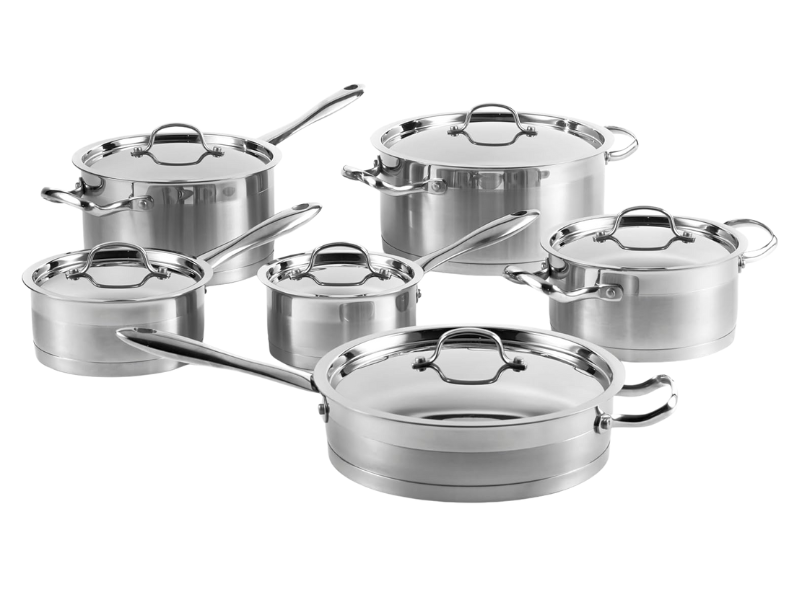
The Lagostina 12-piece stainless steel cookware set offers durable, even-heating pots and pans with ergonomic handles and tight-fitting lids. Oven- and dishwasher-safe, it’s perfect for everyday cooking with a touch of elegance.
Cast Iron: The Heritage Health Hero
We’re passionate about cast iron because it’s the ultimate example of how traditional wisdom aligns with modern health knowledge. This time-tested cookware actually adds beneficial iron to your food — particularly important for women and those with iron-deficiency concerns.
Properly seasoned cast iron develops a natural, non-stick surface that improves with use. The seasoning process creates a polymerized oil layer that protects the iron and provides excellent cooking performance without any synthetic chemicals.
Health Benefits of Cast Iron
Iron supplementation
Naturally increases iron content in foods, especially beneficial for those with deficiencies.
Chemical-free non-stick
Natural seasoning provides non-stick properties without synthetic coatings.
Versatility
Works on stovetop, oven, and even campfire.
Longevity
Can last generations with proper care.
Heat retention
Excellent for searing and maintaining consistent temperatures.
Cast iron requires some maintenance, but the effort pays off in superior cooking performance and health benefits that actually improve over time.
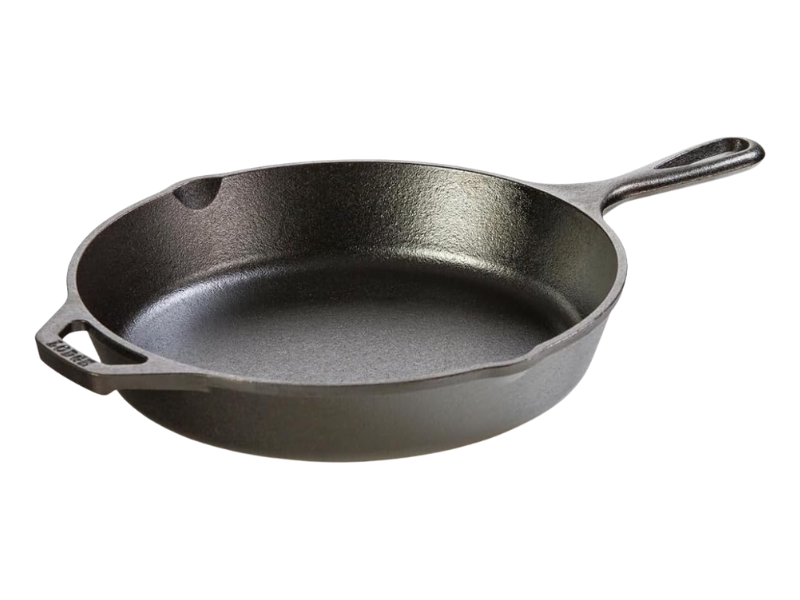
The Lodge 10.25-inch cast iron skillet delivers unbeatable heat retention and even cooking. Pre-seasoned with natural vegetable oil, it’s ready to use on any heat source—stovetop, oven, grill, or campfire.
Ceramic and Glass: The Pure Players
The reason we recommend ceramic and glass cookware is their complete inertness — they’re among the safest materials for food contact. Pure ceramic (not ceramic-coated) and borosilicate glass won’t react with food, won’t leach chemicals, and can handle high heat without degrading.
These materials are particularly excellent for baking and food storage, where you want zero chemical interaction between your containers and food. Glass baking dishes allow you to see your food as it cooks, while ceramic provides excellent heat retention for even cooking.
Health Benefits of Ceramic and Glass Cookware
Complete inertness
No chemical leaching under any circumstances.
Heat resistance
Safe at high temperatures.
Easy cleaning
Non-porous surfaces don’t harbor bacteria.
Transparency
Glass allows visual monitoring of cooking progress.
Microwave safety
Unlike metal alternatives, safe for reheating.
Choose tempered glass or thermal-shock resistant varieties for stovetop use, and look for lead-free ceramic options from reputable manufacturers.
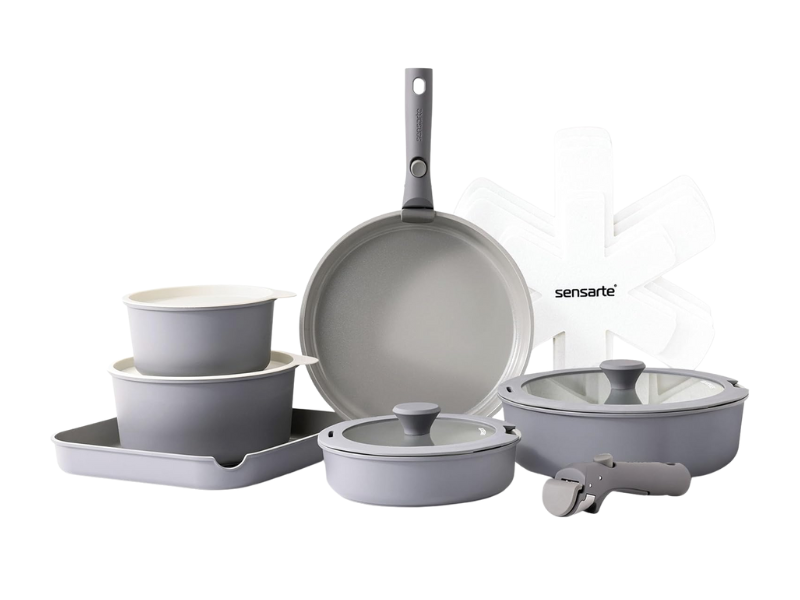
This 17-piece ceramic non-stick cookware set features stackable pots, pans, and removable handles for space-saving storage—perfect for small kitchens or RVs. It’s toxin-free, dishwasher safe, and designed for easy, healthy cooking with minimal oil.
Beyond Cookware: The Hidden Hazards
While pots and pans get the most attention, other kitchen tools deserve scrutiny too. Plastic cutting boards present a particularly concerning issue that goes beyond just harbouring bacteria in knife grooves. Recent research published in the National Library of Medicine found that plastic cutting boards release significant amounts of microplastics during normal food preparation.
The numbers are concerning: researchers estimate that using plastic cutting boards could expose you to up to 50 grams of microplastics annually, with some board types releasing up to 79 million microscopic plastic particles per year during regular use.
Additionally, plastic boards may leach chemicals when exposed to heat or harsh detergents. Aluminum baking sheets, while generally safe, can react with acidic foods and may contribute to aluminum exposure over time. Food storage containers present another concern, particularly those made with BPA or other plasticizers. These chemicals can migrate into food, especially when containers are heated, exposed to acidic foods, or undergo repeated washing cycles.
Smart Swaps:
- Cutting boards: Choose bamboo or sustainably sourced hardwood over plastic
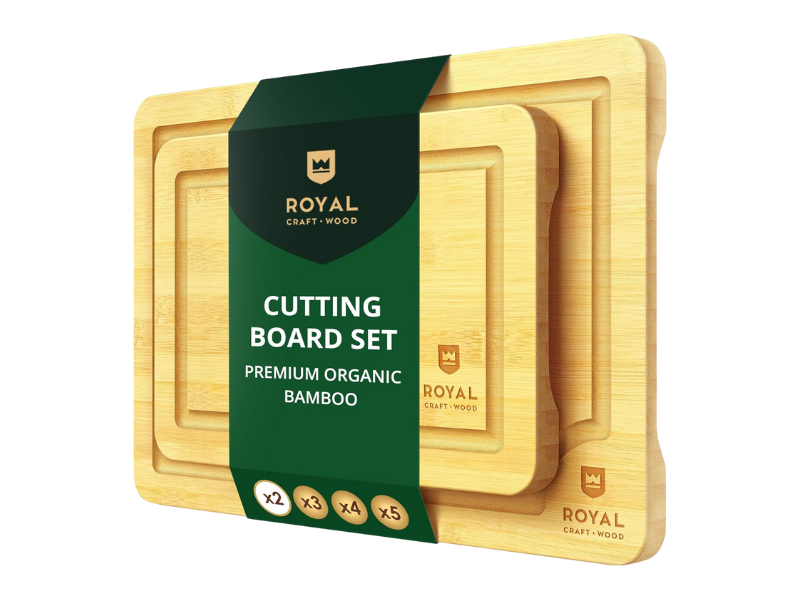
Upgrade your kitchen with this 2-piece bamboo cutting board set—durable, eco-friendly, and perfect for everyday meal prep or stylish charcuterie serving. With deep juice grooves, a non-porous surface, and two convenient sizes, these boards are easy to clean and designed to last.
- Utensils: Opt for stainless steel, silicone, or wood over plastic alternatives
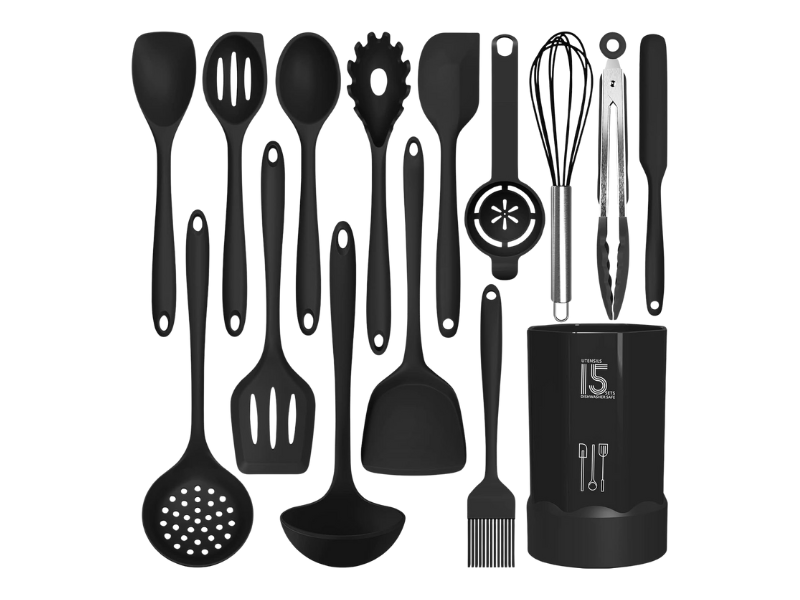
This 15-piece heat-resistant silicone utensil set is BPA-free, nonstick cookware safe, and dishwasher-friendly—perfect for everyday cooking. Durable, non-melting, and easy to clean, it’s a thoughtful gift for anyone upgrading their kitchen.
- Food storage: Glass containers with BPA-free lids for maximum safety

This 18-piece glass food storage set is perfect for meal prep and leftovers. Made from durable borosilicate glass with leakproof, airtight lids, the containers are microwave, oven, freezer, and dishwasher safe—designed to stack neatly and keep food fresh longer.
- Bakeware: Ceramic or glass instead of non-stick or reactive aluminum
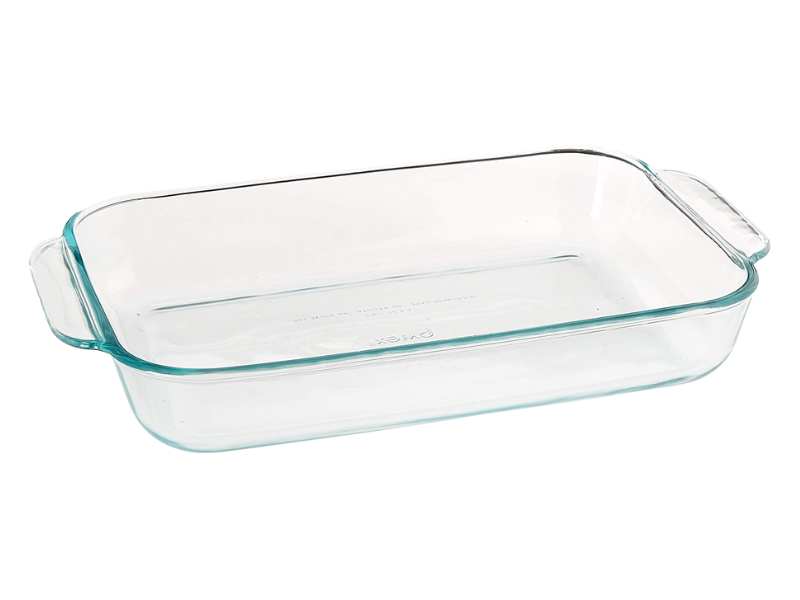
Made in the USA, this 2-quart Pyrex glass baking dish is durable, nonporous, and won’t stain or absorb odours. Safe for the oven, microwave, freezer, and dishwasher, it’s perfect for everyday cooking and lets you easily monitor food as it bakes.
Reading Labels Like a Pro
The key to making informed choices is understanding what to look for and what to avoid. Terms like “PFOA-free” don’t necessarily mean PFAS-free, and “non-toxic” isn’t a regulated term. Look for specific material disclosures and third-party certifications when possible.
Red flags include vague terms like “proprietary coating,” products that can’t specify their materials, or items that warn against high-heat use without explanation. Quality manufacturers are transparent about their materials and construction methods.
Creating Your Healthy Kitchen Ecosystem
The transition to non-toxic cookware doesn’t have to happen overnight. Start with the pieces you use most frequently — likely a good skillet and a versatile pot. Focus on quality over quantity, as well-made pieces will serve you better and last longer than cheap alternatives.
Consider your cooking style when making choices. If you frequently cook acidic foods, prioritize non-reactive materials. If you’re a high-heat cook, ensure your choices can handle the temperature. For families with young children, durability and ease of cleaning become particularly important factors.
Remember that the goal isn’t perfection — it’s progress. Even small changes in your kitchen setup can significantly reduce your exposure to potentially harmful chemicals while enhancing your cooking experience.
Your kitchen should be a place of nourishment and joy, not hidden health concerns. By choosing cookware and tools that support rather than undermine your wellness goals, you’re creating an environment where healthy eating becomes not just possible, but effortless. The investment in quality, non-toxic kitchen tools pays dividends in both immediate cooking pleasure and long-term health benefits.
So take inventory of your current setup, prioritize your most-used items for upgrading, and start building a kitchen that truly serves your health. Your body — and your taste buds — will thank you for making the switch to safer, more supportive cooking tools.
~Read more from The Health Insider~
- The Science of Sweat: How Saunas Boost Heart & Brain HealthExplore the life-extending benefits of sauna use. Compare traditional and infrared costs, health benefits and safety in our expert guide.
- There’s a Reason Your Voice May Not Be As Clear as it Can BeFrom dry winters to loud parties, your voice takes a beating. Learn how to protect your “vocal instrument” with these expert tips and SAC guidelines.
- Leftovers Safety: Store & Reheat Like a ProLearn how to store and reheat holiday leftovers safely. From the “Two-Hour Rule” to freezing tips, keep your Canadian kitchen healthy this season.
- Guilt-Free Indulgence for the Holidays. This is How it’s Done.Enjoy every plate this season! Prep your gut with our low-effort tips: boost hydration, sip digestive tea, and avoid the post-feast crash.
- Health Canada Authorizes TNKase for Treatment of Adult StrokeHealth Canada officially authorizes TNKase for treating acute ischemic stroke in adults. This pivotal approval introduces a faster, 5-second injection to emergency rooms nationwide.
- Generic Ozempic: Canada to See Significant Price DropsStruggling with high medication costs? Generic Ozempic is coming to Canada in 2026. Learn how prices could drop from $400 to around $100.
The information provided on TheHealthInsider.ca is for educational purposes only and does not substitute for professional medical advice. TheHealthInsider.ca advises consulting a medical professional or healthcare provider when seeking medical advice, diagnoses, or treatment. To read about our editorial review process click here.

